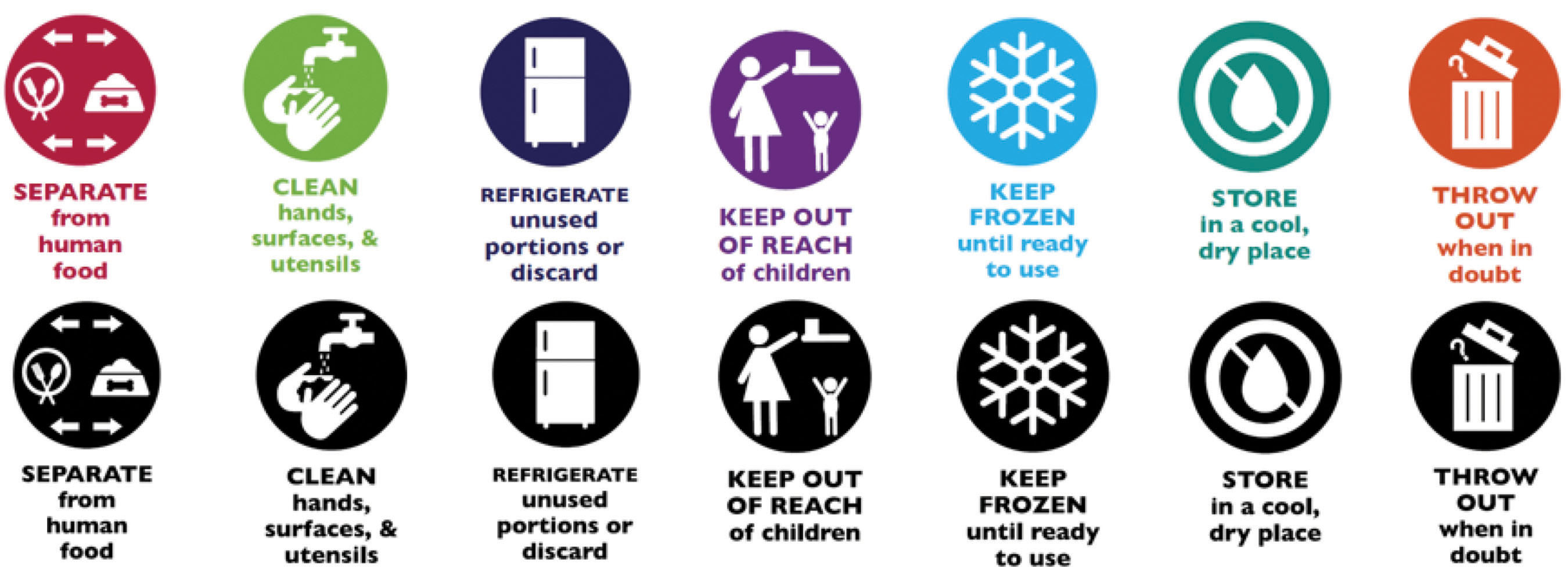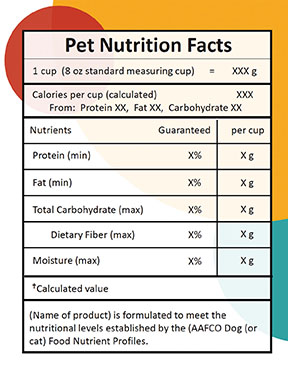This article was published in the May 2023 issue of Pet Food Processing. Read it and other articles from this issue in our May digital edition.
For something that typically moves at the pace of an aging tortoise, the beginning of 2023 has seen some puppy-like speed in finalizing changes to the Association of American Feed Control Officials’ (AAFCO) labeling requirements in the model pet food regulations, the regulatory tome for the pet food industry.
The leash is finally clipped on and, like a happy dog, pet food, feed and ingredient manufacturers are expectantly waiting for the door to open so we can bound through and enact the regulatory changes we have worked so hard to bring about. Enough of “sit,” “stay,” or even “heel.” It is time to leap forward and implement the changes that have been so long coming.
“Enough of ‘sit,’ ‘stay,’ or even ‘heel.’ It is time to leap forward and implement the changes that have been so long coming,” wrote Louise Calderwood, American Feed Industry Association.
Let’s take a sneak peek at what manufacturers will transform once they can energetically race after the ball of change and learn how the updates will assist pet owners in making informed choices for pet diets.
Pet food label modernization process
In 2015, AAFCO undertook the task of modernizing pet food labels to improve pet owners’ understanding of the information contained on packaging. The last major revision to the AAFCO model pet food regulations took place in the early 1990s. Many American Feed Industry Association (AFIA) members have been engaged in this project, working alongside state and federal regulators in the multi-year process of collecting consumer input, developing new nutrient analysis requirements, and packaging narrative and visual prompts to increase pet owners’ understanding of pet food labels. Now, we are excited to see it coming to fruition.

Brands will have the option to add informative icons to their packaging to help communicate storage and handling instructions to consumers.
| Source: The Association of American Feed Control Officials (AAFCO)
As overall pet care improves and pets live longer lives, it is important for pet owners to fully understand the benefits of the many different diet options to support matters such as joint health, cognition and the ever-burgeoning issue of pet obesity. The eight years of development culminating in the AAFCO-led pet food label modernization effort will provide pet owners with easy-to-understand information found on their pets’ food packaging. Multiple rounds of consumer research were conducted to learn how pet food labels can better communicate important information, and the final changes were revised based on pet owner feedback. As companies adopt the labeling changes in the years ahead, retailers and veterinarians will be able to assist manufacturers in the ongoing effort to educate pet owners in making informed choices about their pets’ diets.
New packaging is clear
The new label format will require nutrition fact boxes, similar in design and function to what are currently found on human foods. With proposed changes to state the number of calories per common household unit, such as a cup or can of pet food, the updated fact box will also include information about the calories from protein, fat and carbohydrates, similar to what is available for human foods. For example, pet owners interested in the source of calories in their pets’ diets can now make choices based on this information.
Another important change that will assist in appropriate pet food selection is the new requirement for front-of-packaging pet nutrition cues for pet owners to consider when making their purchases. Updates to the AAFCO-proposed regulations include clear language on the lower third of the front of pet food packages to plainly state the intended uses of the food with statements, such as “Complete food for puppies,” or “Cat treats.”
 With the growing number of pet food products available today, consumers have expressed the need for clearer labels to help them choose the best for their pet. | SOURCE: ©XENIA800 – STOCK.ADOBE.COM
With the growing number of pet food products available today, consumers have expressed the need for clearer labels to help them choose the best for their pet. | SOURCE: ©XENIA800 – STOCK.ADOBE.COM
Seven standardized icons have been developed for voluntary use by pet food manufacturers to provide information about best practices for storing pet foods and common handling steps, such as hand washing and using separate utensils for serving pet foods. If the manufacturer desires to convey that a pet food should always be kept frozen, there will soon be a light blue snowflake icon to clearly show that recommendation as being different from a dark blue refrigerator icon for foods that should be refrigerated after opening.
Clarity in nutrition content
The updated format will also include the actual amounts of protein, fat, dietary fiber and carbohydrates, instead of the previously required maximum guarantees for protein, fat and crude fiber. Unlike crude fiber, which only measures the indigestible fiber fraction, dietary fiber measures both the soluble and insoluble fiber fractions of the edible portion of the plant cell wall (found in fruits, vegetable, whole grains, and legumes, which are more present in today’s pet foods). Although dietary fiber analyses are more time consuming and expensive to conduct than crude fiber analyses, the dietary fiber measurement allows pet owners to more accurately compare fiber amounts when choosing pet foods. Two diets that are similar in crude fiber could be very different in the total amount and types of fiber, and these variations could have dramatically different effects in pets. Armed with this additional dietary information, pet owners will be able to make knowledgeable decisions for their pet’s specific needs when selecting pet foods based on fiber content.

A new Pet Nutrition Facts box, similar to what’s found on human food packaging, will now be required on the back of pet food packaging.
| Source: The Association of American Feed Control Officials (AAFCO)As our understanding increases about the role of carbohydrates in pet health and weight maintenance, the modernized label information will allow pet owners to choose foods to manage the presence of carbohydrates. Some diets are formulated with more carbohydrates to allow for lower protein or fat content, which can help to address a health issue or reduce calories (a gram of fat provides more than twice the calories of gram of protein or carbohydrates). This information is also helpful for owners wishing to manage their pets’ weight.
The proposed label modernization supports new label formats for the use of common names for vitamins, clarifies the naming conventions of meat, fish and poultry, and limits the use of “organic” in marketing claims, unless all the ingredients in the pet food are produced using organic practices. However, it allows individual organic ingredients to be labeled as such in the ingredient statement.
A fresh look for fresh ideas
Now, the AFIA’s members are preparing to start the herculean task of designing packaging, updating internal review systems, preparing new laboratory methods, and supporting AAFCO in its efforts to educate state regulators, veterinarians, retailers and pet owners about the impending changes. It is an exciting undertaking and pet food manufacturers are gearing up for the challenge. The draft regulations are moving through the AAFCO review process with an anticipated approval later this year.
Thanks to the tireless work of regulators and pet food manufacturers, pet owners will soon have more information to help them make the best choices possible in feeding their pets. And then we can all shout “Release!” as we eagerly run to adopt the changes in the marketplace.
For more regulatory news affecting the pet food market, visit our Regulatory page.



